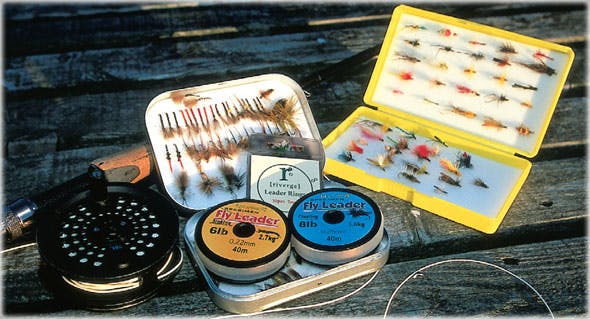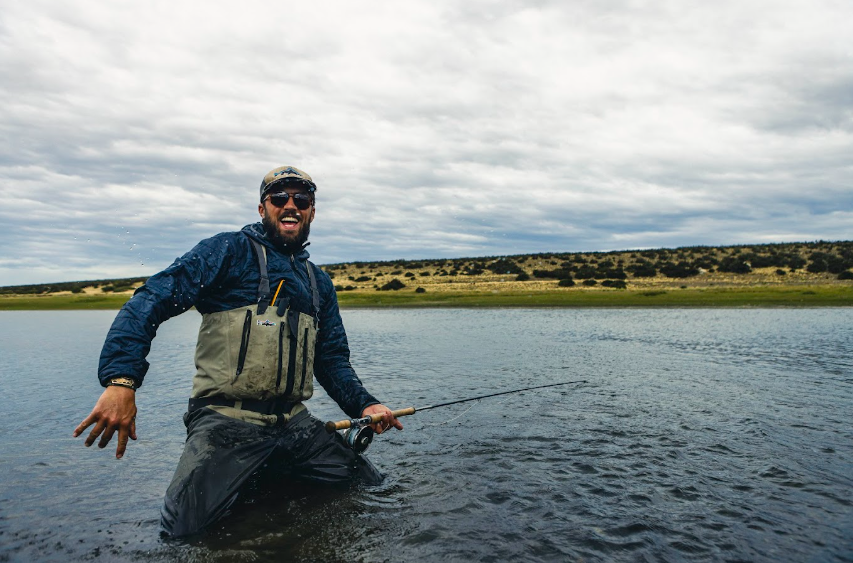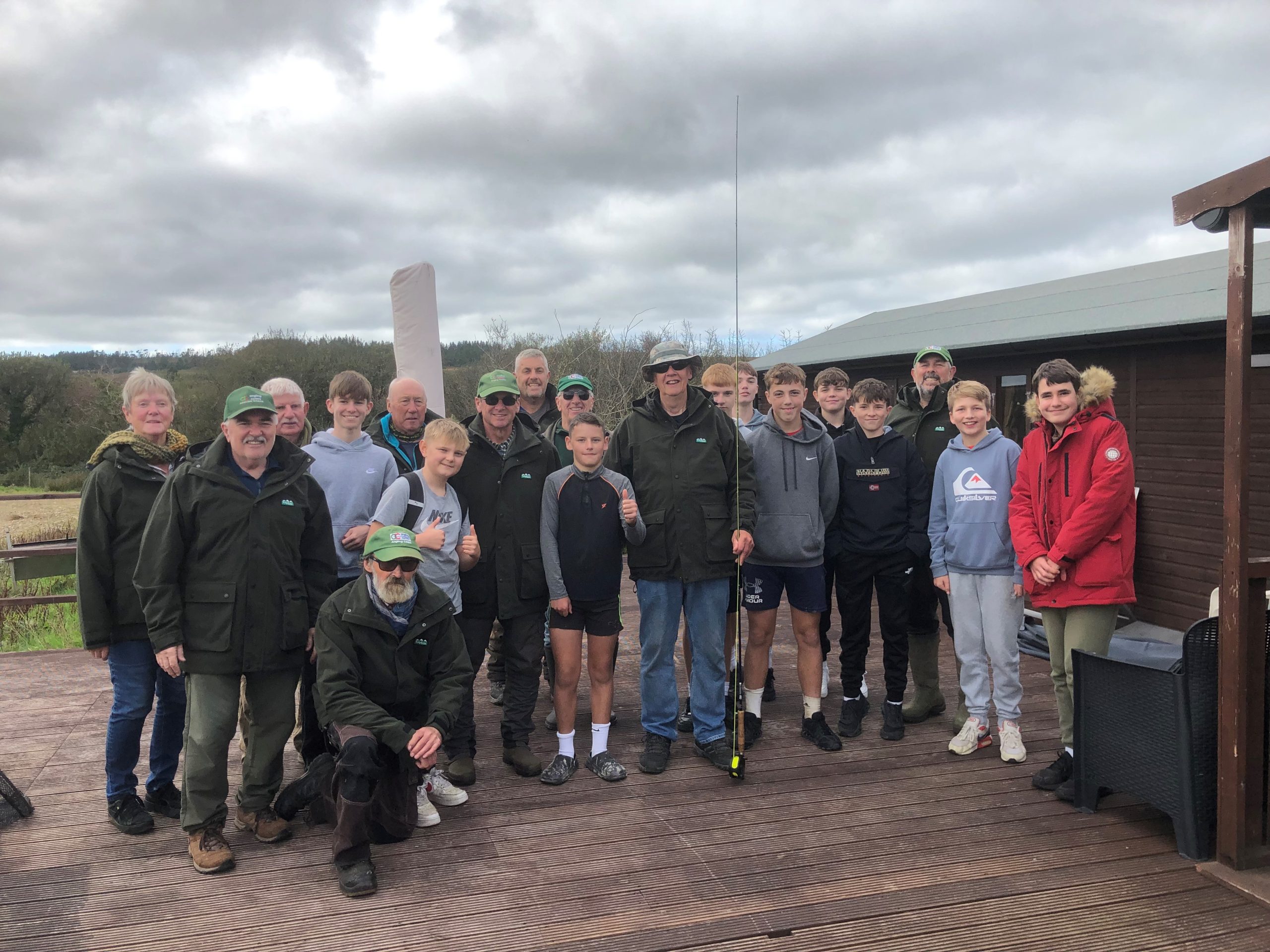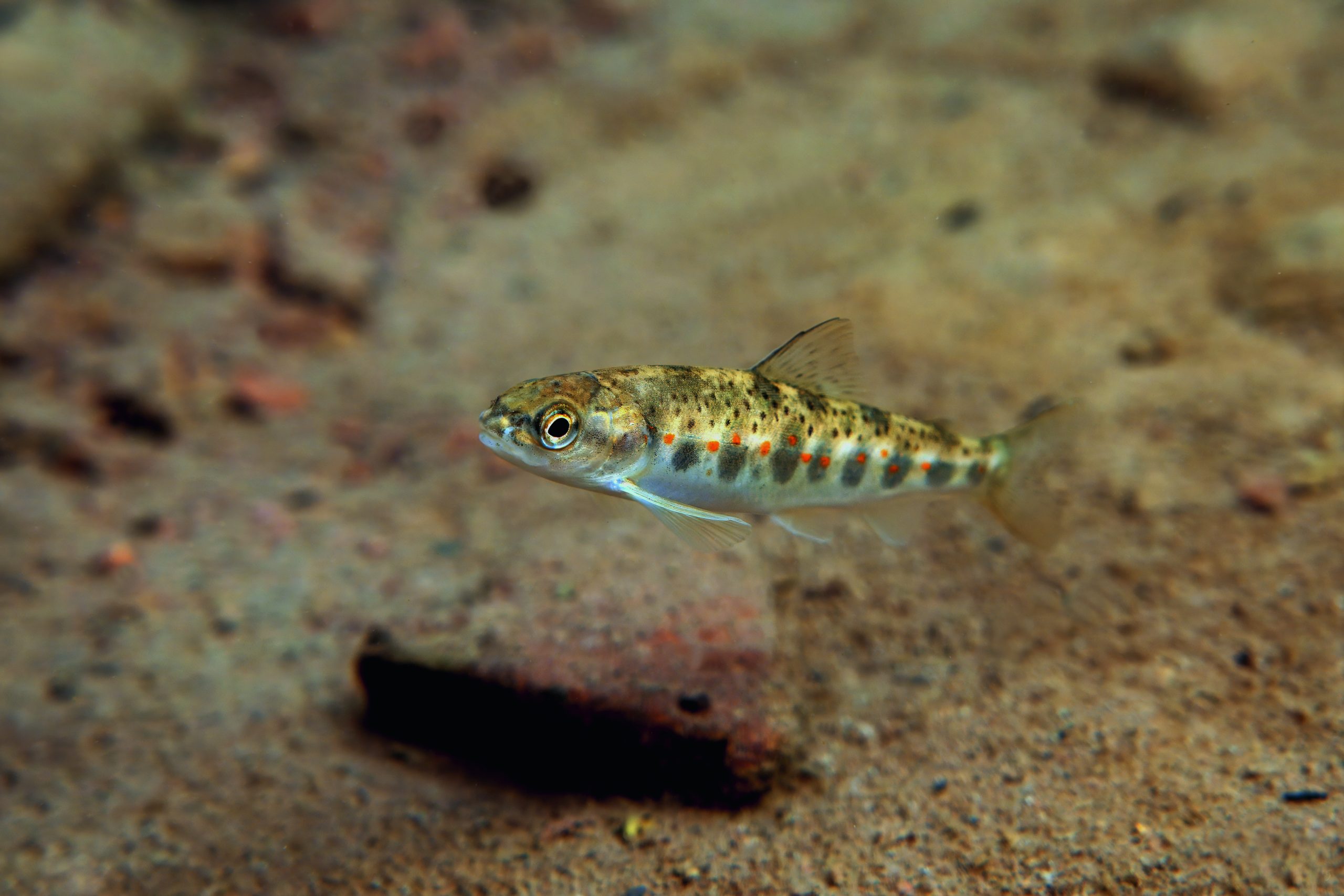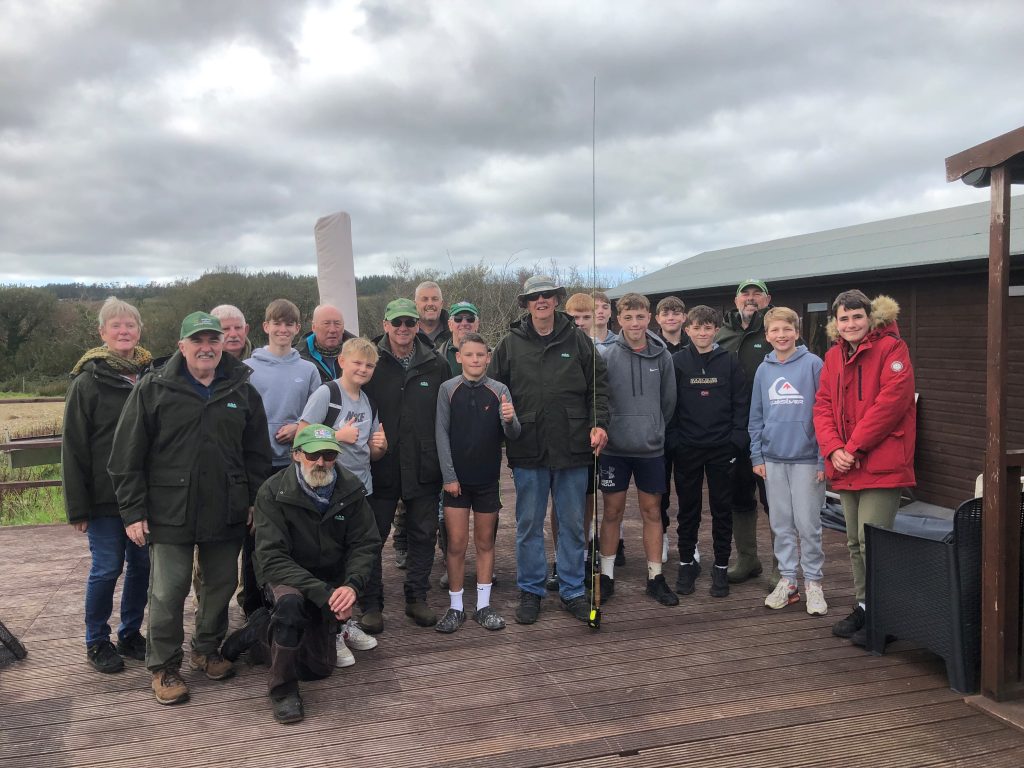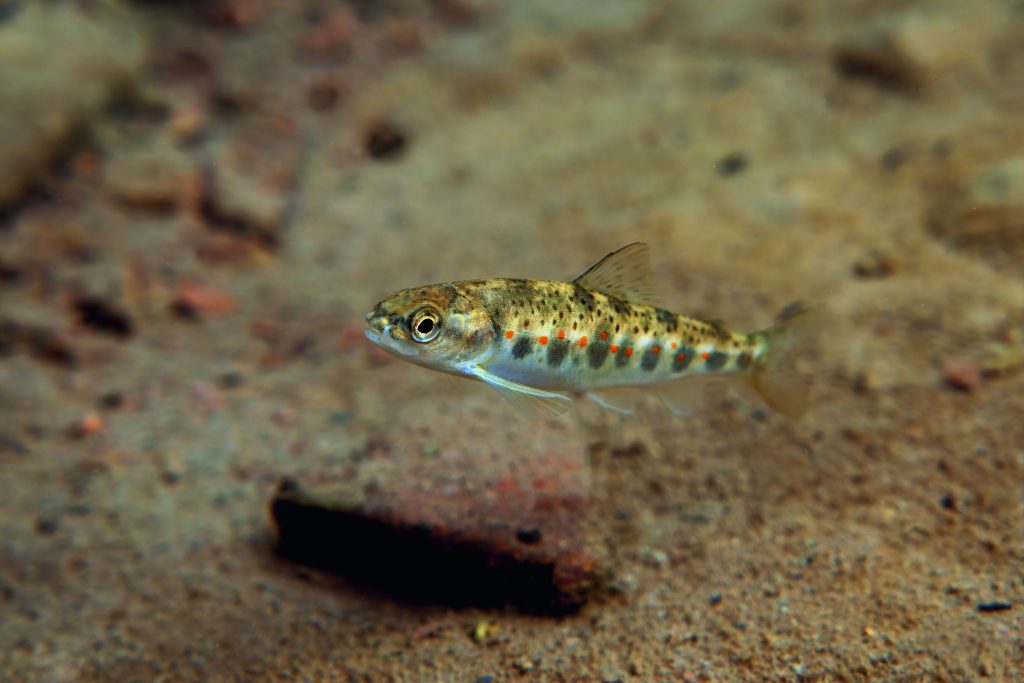HOW TO FLY FISH ON SMALL TROUT STILLWATERS
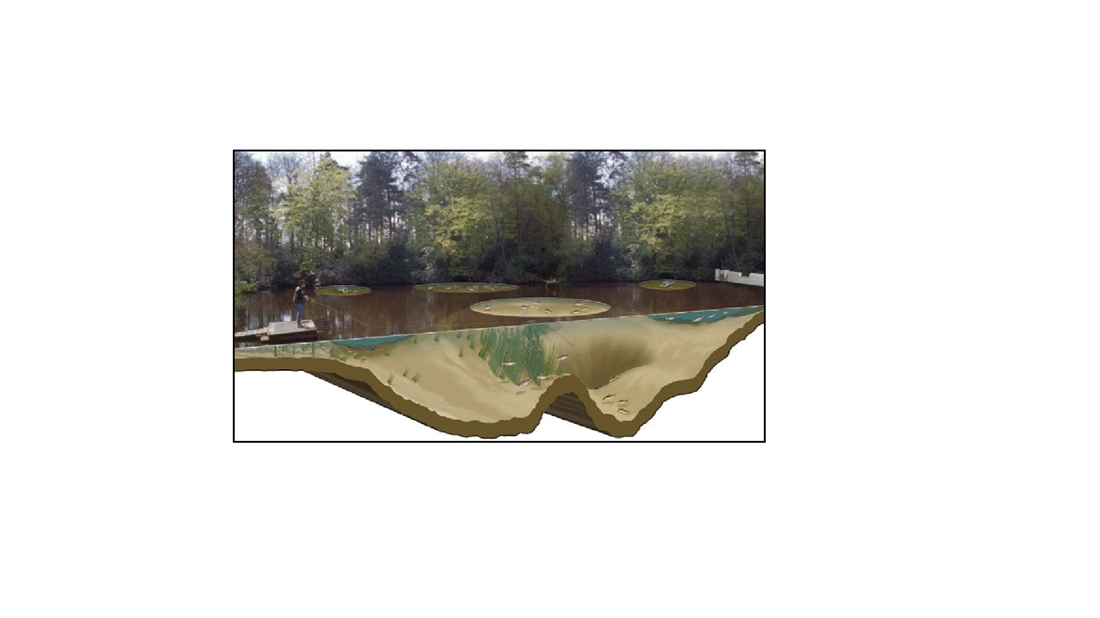
Many trout fisheries are now open all year, but getting the most from these small trout waters when using fly fishing tackle can be quite a daunting prospect for some. Heres how its done…
As the water temperature starts to slowly climbtural insect life begins to increase and the trout respond accordingly.
Small waters are usually 10 acres or less. Some will be permanently coloured from the underlying clay soil or surrounding vegetation. Others will be crystal clear due to underground springs or gravel beds.
Each type of water will require a different approach as the season goes on, but in the opening weeks standard techniques will catch you fish.
The water will be freshly stocked for the new season and will contain a mixture of new fish and wiser residents left over from the winter. Many fisheries now offer catch and release giving you the choice of whether to keep your catch or return them.
And do make sure that you have a current rod licence!
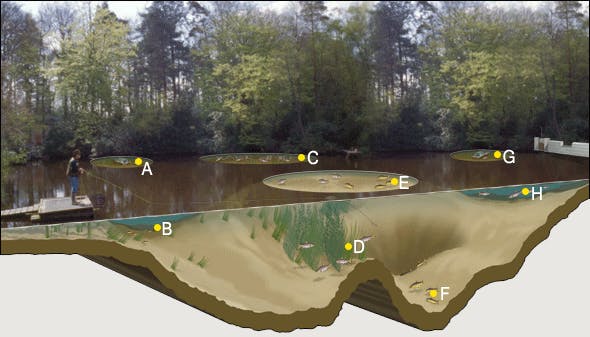
A. INFLOW
The inflow point or stream entry will always attract trout, particularly in warm weather. This area is normally shallow so be cautious in approach.
B. SHALLOWS
A stream-fed lake may well support a wild brown trout population. Look for the small wildies in the shallows feeding on nymphs and shrimps
C. TREES
Well-wooded banks provide ideal cover for trout and an easy food source of beetles and terrestrial flies. Search under trees for bigger fish
D. WEEDBEDS
Many weedbeds no longer die back in winter so remain home to sticklebacks, hoglice and coarse fry. The wiser resident fish will be found here
E. GRAVELS
Trout can’t keep away from clean gravel beds, especially on a warm day when they like to cruise the shallows. This is a good area to try a dry fly or weighted nymph
F. DEEP HOLE
Any resident brown trout will be lying deeper during the day, waiting for evening to rise higher in the water. Target these fish with lure and sinker
G. OUTFLOW
Another popular spot for feeding trout as a current is created here. Trout will often lie in position, waiting for any food that about to be sucked down the pipe
H. OPEN WATER
Stock rainbows will cruise the open water in a loose shoal, often circling the lake like a stock pond. Look for fish topping as they move along the bank.

PROMONTORIES: Fish that are running along the bank will have to pass any promontory, point or peninsula. These spots are always the most popular for any bank angler as they give you the opportunity of being able to cover a lot of water. And even if a head wind is a problem, if you are on the end of the point you can turn enough to fish your flies across the wind. Tip: Get up early to bag pole position on the end of the point
YOUR SWIM
DAM WALLS: Most small fisheries were dug out at some time so will invariably have a clay, brick or concrete dam where you’ll find the deepest water. Casting out from the centre of the dam will usually find the deepest spot on the reservoir, particularly if there’s an old submerged stream bed that was originally flooded.
These areas will always hold fish but may also be the most crowded with other anglers. Here you can often expect the fish to be close in to the bank, so long casting is not an issue. Dams are traditionally the place where fish are stocked, because it’s easier to get the stocking lorry down to the water.
Tip: Strip your line into your landing net to avoid snagging any loose bits of grass or twig.
PLATFORMS: Purpose-built wooden platforms offer the angler the chance to fish areas where otherwise it might be difficult to cast because of a high bank behind or thick surrounding foliage. It may pay to keep moving round the lake from platform to platform.
Tip: Watch your line on the woodwork or any wire netting protecting the end of the platform.
ISLANDS: Whether manmade or natural, these features always hold fish, particularly on the shelf leading up to the island. But they may need a good cast to reach them. Islands invariably hold trees and thick undergrowth which, in turn, encourages insects which can drop onto the water. You may need to put your fly as close to the island as possible
Tip: The most awkward spot to reach invariably holds a fish or three.
INFLOWS/ OUTFLOWS:Anywhere there is a current will attract trout. Food is naturally wafted into these areas and the trout will just lie there waiting for an easy meal.
Tip: Look for trout hanging close to the bank in these hotspots.
OLD WEED BEDS: With winters not as cold as in the past, weed beds no longer die away completely. These can be hard to locate visually early in the season, so prior knowledge can be an advantage. These areas will hold food like hog louse, shrimp and fry all year round.
GRAVEL SHALLOWS: On a larger fishery, like a gravel pit, you may find non triploid resident females shoaling in shallow water to try to get rid of their eggs. And on warmer days, all the trout in the lake may seem to be basking in the shallows.
Tip: On warm days in shallow water, try a dry fly.
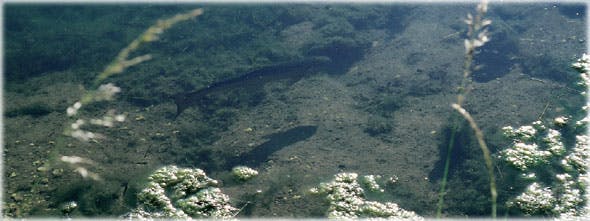
THE QUARRY
RESIDENT FISH: These are trout that have been in a fishery for some weeks, or maybe the whole winter period, and will usually be out at long range or keeping to cover such as deep water, old weed beds or overhanging vegetation such as willows. In essence, they become smart and move to areas of the fishery rarely disturbed by anglers. Early season they will typically be out over deep water.
Brown trout may not be in season until April or maybe mid March in some areas and almost always keep very close to the bottom of the lake in early season. This is why you sometimes find them with thin brown leeches on their body. Brown trout seem to take longer than rainbows to get in condition.
STOCK FISH: Freshly-stocked rainbow trout will quickly set off to cruise around the lake to explore their new surroundings. But because they are used to a crowded stock pond existence, they will initially stay together in a shoal.
If it’s windy, stockie trout follow the breeze and end up on the downwind shore. Otherwise they tend to shoal in the deeper areas before the shoal gradually breaks up as the fish go their own separate ways and start feeding naturally as they acclimatize to their new home.
Bigger fish tend to go it alone and will more likely follow the bank quite close in. Rainbows tend to zoom around quickly in midwater while browns skulk in the deeps.
Rainbows can be caught within minutes of being stocked, especially to bright flies with plenty of movement. Browns can be much more reluctant to begin feeding and you will do best with smaller, imitative patterns or maybe a black lure fished slowly along the bottom. However, on larger waters browns when stocked in numbers can initially act very naively and ravenously hit any fly. You may have to move away from them.
STARTING OFF

When you arrive at the water — try to get there as early as possible — look for any signs of fish moving. These will usually be new stock fish, but there may be some resident fish moving as well.
Pick a swim where the wind aids your casting, particularly if you can cast across the breeze and let your line come round in an arc. It’s unlikely that the fish will be very deep so you can either use your floating line with a longish leader, or a clear slow-sinking intermediate line to bring your fly through the water layers that much deeper.
Probably the most consistent flies around are the goldhead Damsel Nymph and Cat’s Whisker. These will take fish all year round, so they’re great bankers to start the day with. Go for a smallish Damsel Nymph like a size 10 or 12 but make sure it has a long sinuous marabou tail. It’s this movement that provides all the trout attraction.

Choose a Damsel Nymph with a long marabou tail, providing that allimportant movement
Tie on the fly with a two-turn water knot or a Grinner knot. Moisten the coils and pull them up slowly to check the knot is firm. Otherwise fluorocarbon can pull free.
Search the water by fan casting. If no takes come, repeat the process allowing the fly to sink deeper on each series of casts until you snag the bottom, or catch a trout.
Vary your retrieve from a slow figure of eight, to jerky pulls, and then long slow strips. But whatever you do, never be in too much of a rush to pull your flies out of the water at the end of the retrieve. Just leave the fly in the water for a few seconds and give any following fish the chance to grab hold.
Similarly after casting out, watch for takes as the fly is falling through the water. The leader or line will shoot out as the fish intercepts the fly.
If the weather is warm enough, it’s likely that some early buzzers will hatch. Capitalise on this by adding a Black Buzzer to a dropper about five feet away from the point fly.
Then if takes come consistently to the Buzzer, switch the point fly for another Buzzer of a different colour.
Fish your Buzzers very slowly so that they imitate the natural pupae ascending in the water.
One popular method is the indicator fixed on the fly line or leader at a set depth above the flies, to keep them at a constant depth.
A successful fly is the Booby with its buoyant eyes. This can be fished on any fly line but is probably at its best on a medium to fast sinking line and short to medium leader.
Stock fish are often quite unable to resist this fly so first make sure that Boobies are allowed by the fishery. And if you are intending to practise catch and release, don’t use a Booby as the trout often just swallow them down. Favourite earlyseason colours for a Booby are black and green, white or orange.
The same early-season colours will work for lures, leading to the success of the Viva and Cat’s Whisker.
The Black Buzzer, particularly the Spanflex or heavy-varnished version, will take fish from the start, as will Hare’s Ear, PTN and Diawl Bach.
EARLY SEASON FOOD
Bloodworm, or midge larvae, are present all year in silty areas of six to ten feet deep leading to the first buzzer hatches when the pupae ascend to the surface to hatch into the adult fly. Alder larvae start their shoreward migration. The fish eat any larvae likely to venture from cover. Pond olive nymphs might be about with hoglouse in deep water.
Stickleback shoals can also get eaten in shallow water where they begin to gather for spawning.

THE TACKLE
RODS: Action in a fly rod is either fast, middle to tip, or slow. This relates to the bend in the rod when it is under load, either from the fly line or when playing a fish. The best all-round rod for a newcomer is a middle to tip action, which is still stiff enough to create a tightish loop when casting but flexible enough to feel the line loading during the cast. Go for a 9ft 6ins two or three-piece seven weight rod. There are plenty of bargains to be had between £50 and £100.
REELS: At one time, a fly reel was for no more than storing your line. But today’s modern lightweight composite or aluminium reel is much more than that. It will normally have a disc drag, and a large or mid-arbor spool to minimise line memory. You will also need 100 yards of braid backing. Some fly lines are now supplied with a welded loop to attach backing. If not, use a nail or whip-finish knot. Finish off with a dab of Superglue.
FLY LINES: You’ll need a weight-forward floating fly line, and a spare spool holding a clear intermediate slow sinker. It may also be worth investing in a sinktip line. You may find it easier to cast with a fly line one size heavier. This will load the rod quicker.
LEADERS: Buy two spools of fluorocarbon leader material — 6lb for nymphs and 9lb for lures. Your leader length can vary from 12ft up to 20ft, depending on the wind, how the fish are feeding and your casting skills. Try to buy a fly line which already has a braided loop attached. Otherwise you will have to fit one (see Advice Squad).
OTHER GEAR: You will need an extendable landing net; pair of forceps to remove the fly hook or flatten the barb; a pair of polarizing sunglasses, snips or scissors, line sinkant, fly floatant and a hook hone.
CLOTHING: Fly anglers like to look the part on the bank so there’s a huge wealth of clothing to choose from. When it comes to footwear, on most small fisheries you will need no more than a pair of rubber boots. But a pair of breathable chest waders are a good investment for the future.
